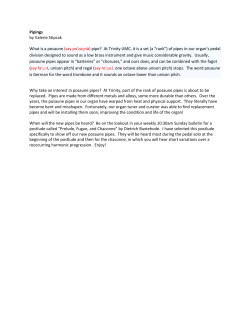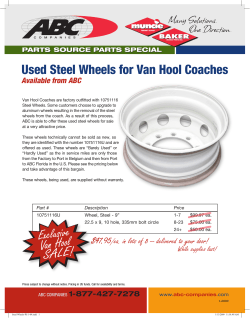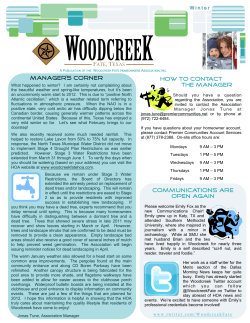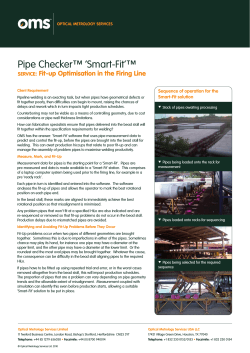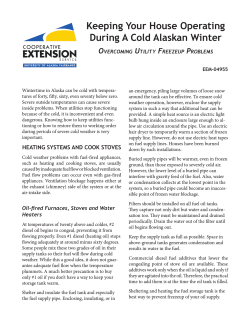
Schemas – How To Understand ... Behaviour By Mark Lim, Early Years Childcare What are schemas?
Schemas – How To Understand And Extend Children’s Behaviour By Mark Lim, Early Years Childcare http://earlychildcare.wordpress.com/ What are schemas? Schemas are patterns of repeatable behaviour which can often be noticed in young children's play. By exploring and practising their schemas in different situations, children become more knowledgeable about the world around them. An example of a schema would be a child who carries bricks from one place to another in a bag or pushes a friend around in a toy pram. This would be the Transporting Schema. How are schemas useful? Understanding schemas are useful for helping to understand a child’s motivation for doing something. From there, we can extend their learning by matching curriculum content based on their individual interests For example, take a child who’s interested in transporting and exhibits the Transporting Schema. During sand play, you’d have greater success at engaging his interest by having him move sand in buckets and trucks, as opposed to asking him to dig or bury objects. Do all children follow schemas? Although children often show particular schemas in their play, not all children will be follow schemas. In addition, some will show one particular schema particularly strongly and others will show several at once. Sometimes one schema which has been particularly strong will even seem to fade, possibly to be replaced by another. Please feel free to contact me with any remarks or queries at marklim81@gmail.com By Mark Lim, Early Years Childcare http://earlychildcare.wordpress.com/ Page 1 Table 1: Some easily identifiable schemas Schema Description of possible behaviours Transporting A child may carry all the bricks from one place to another in a bag, the sand from the tray to the home corner in a bucket, push a friend around in a toy pram. Enveloping A child may cover themselves in a flannel when washing, wrap dolls and toys up in blankets and fabric, cover their painting with one colour. Enclosure/containing A child may put their thumb in and out of their mouth, fill up and empty containers of all kinds, climb into large cartons, sit in the tunnel, build 'cages' with blocks. Trajectory (diagonal/vertical/horizontal) A child may gaze at your face, drop things from their cot, make arcs in their spilt food with their hand, play with the running water in the bathroom, climb up and jump off furniture, line up the cars, bounce and kick balls, throw. Rotation A child may be fascinated by the spinning washing machine, love anything with wheels, roll down a hill, enjoy spinning round or being swung around. Connection A child may distribute and collect objects to and from a practitioner, spend time joining the train tracks together, stick the masking tape form across form the table to the chair. Positioning A child may put things on their head, prefer their custard next to their sponge not over it, lie on the floor or under the table. Transforming A child may add juice to their mashed potato, sand to the water tray, enjoy adding colour to cornflour or making dough. Table 2: Child’s possible preferences according to schema Schema Child's preferences Connection (joining) Train track, construction, string, sellotape Enveloping surrounding) (covering, Dens, things in boxes, envelopes, dressing up, wrapping 'presents' Rotation (circles) Circle games, wheels, roundabouts, spinning tops, kaleidoscopes Trajectory (straight lines) Throwing games, woodwork, percussion, football, playing with running water Transporting (moving things) Shopping bags, buggies, trailers By Mark Lim, Early Years Childcare http://earlychildcare.wordpress.com/ Page 2 Table 3: Activities according to schemas Connection Enveloping and enclosure Cooking Sequence in Picnic food recipes Sandwiches, mince pies, pasties, stuffings Putting things away Rotation Transporting Trajectory Stirring, whisking, mixing, washing Liquidiser Rolling out pastry Shopping for Popcorn ingredients Chopping Taking things to oven or fridge Giving out food Sand (wet) Pipes Tunnels Sandcastles Filling things Burying Archimedes Sand treasure and screw buckets objects trucks Tunnelling in Digging and Sand (dry) Funnels and Filling bags Sand wheel bottles and socks Sprinkler Filling pipes Collecting in yogurt pots Pipes, funnels Pipes Guttering Trucks Trails Things with holes Pipes Guttering Water Pipes Hoses Bridges Washing Circular things sewing Filling up Pom-poms bottles Pipes and funnels Making boats Blow bubbles Hose pipes and tubing Pouring Guttering Things with holes Bubbles Pumps Sprays Squeezy bottles Fabric Sawing Threading Weaving Knitting Making bags Taking turns Roleplay Filling handbags Arranging furniture, cushions, bricks etc Filling bags Dressing up Dolls in cots, prams Dressing dolls Blankets over tables Sewing Knitting Weaving Playing post people/milk people 'Moving house' Pulling toys on string Appropriate ways of running, throwing, kicking in role By Mark Lim, Early Years Childcare http://earlychildcare.wordpress.com/ Page 3 Small world Train track People Cars Layouts Animals Cars and Cars tractors ramps Trains Collections Layouts and Computer Loading Word processing Printing Symmetry Sequencing Making patterns Printing work Pressing buttons Games and puzzles Dominoes Feely Jigsaws boxes Matching and Lotto tessellating games Magnetic fishing Turn-taking Incy wincy spider Number top Whisper games Snakes ladders Ludo Paint Patterns Symmetry Mixing paint Carrying Spray and Finger paint/water to splatter painting object painting Paint rollers Blow Marble painting painting Squeezy bottle Workshop Sellotape, string, boxes, glue, junk modelling, kites, threading Borders for pictures Bubble painting Covering paintings Throwing dice and Snakes and ladders Making Masks, Making Paper hats, containers or containers or aeroplanes Wrapping vehicles vehicles Toy up, crowns, parachutes tape Elastic band Putting Catapults things in boxes Papier mache Books Making books Opening Repetitive Going to and closing stories and library, taking books rhymes books to special places Graphics Symmetry Calendars Envelopes Round paper Writing in Spirograph little books Letter boxes Sending and receiving letters, parcels and messages By Mark Lim, Early Years Childcare http://earlychildcare.wordpress.com/ Rulers Drawing/ writing about cars, planes. Page 4 Small Marble run Putting construction away Houses things Cog wheels Models Building and with wheels demolishing towers, marble run Cog wheels Large Bricks and Burying things construction blocks Houses for things Models Making with wheels rockets, fast trains Outdoor play Making up games Circle games Gardening Parachute games Obstacle courses Hose pipes Burying things Hiding in or under Tents, dens Hide and seek Parachutes Playing in boxes and boats Trucks for collecting and carrying Road games Suitcase Moving equipment Watering pipes and cans Flags, nets Running, hitting, throwing and aiming games Balls, bats, skittles Music sound Headphones Record player Rounds, chants Ring games Taping music Listening and imitating Percussion Garlic crush Hammering and throwing clay and Percussion for Sprinkler Skipping Hoops, quoits Rolling tyres down hill Wheeled toys Circular obstacle course Malleable Connecting Models with Mixing dough modelling things inside Rolling Making balls Covering pies and cakes Dough to oven Carrying cakes in egg boxes Woodwork Nails, nuts, bolts; wood to hammer Making Hammering things with Sawing wheels Investigation Electric circuits Pulleys Pipes and plumbing Drill Vice Microscope Binoculars Bottles, collections Seeds and bulbs Giro scope Collections Catapults Cogs Pulleys Pulleys Pulleys Snail trails Rotators Wheels Reflection Spinning tops Kaleidoscopes Sources: Schemas by Juliet Mickelburgh, The Foundation Stage Forum (http://www.foundationstage.info/newfsf/articles/members/FSFArticle_186.php) Schemas, Dorset County Council (http://www.dorsetforyou.com/index.jsp?articleid=357248) By Mark Lim, Early Years Childcare http://earlychildcare.wordpress.com/ Page 5
© Copyright 2025
